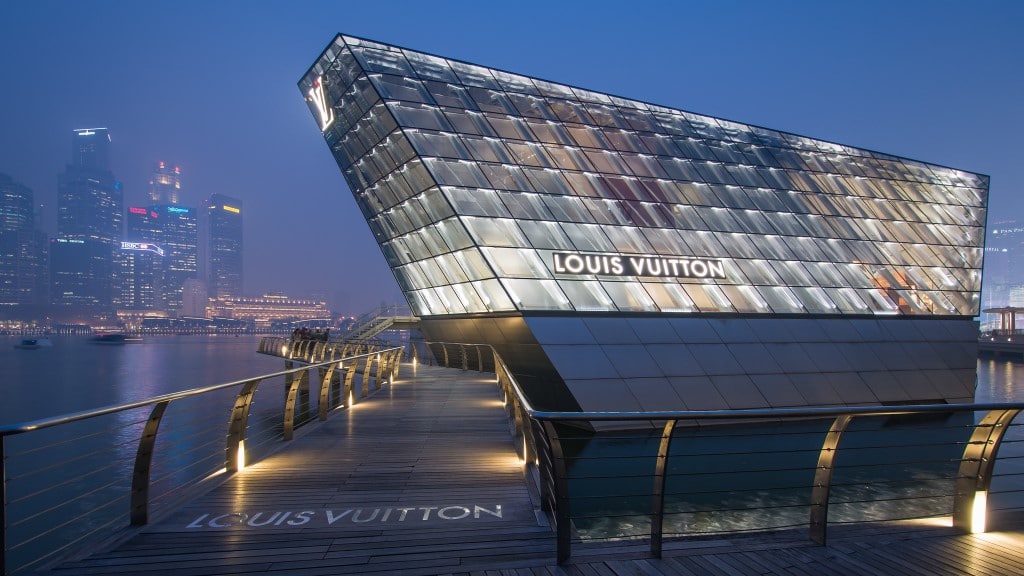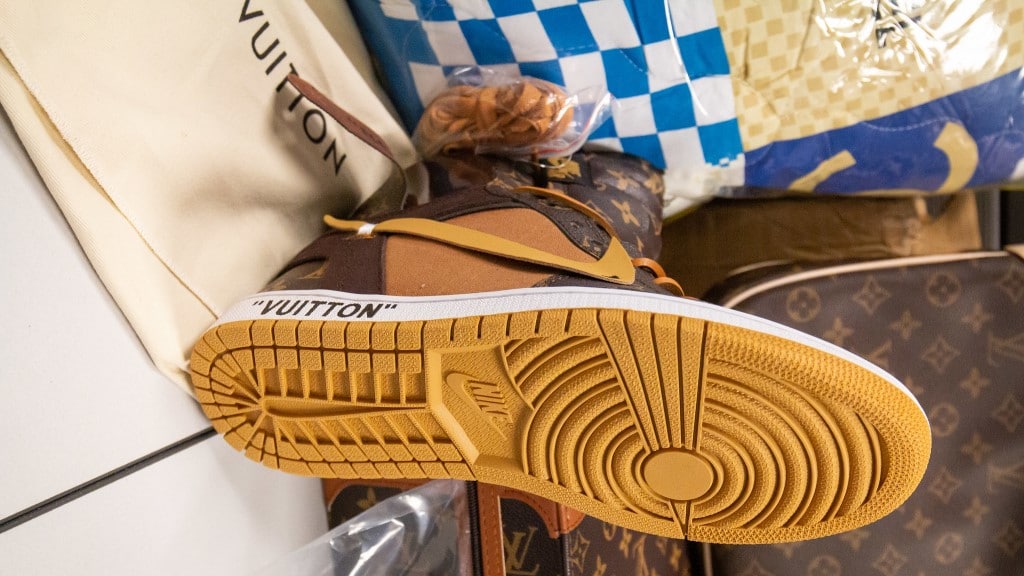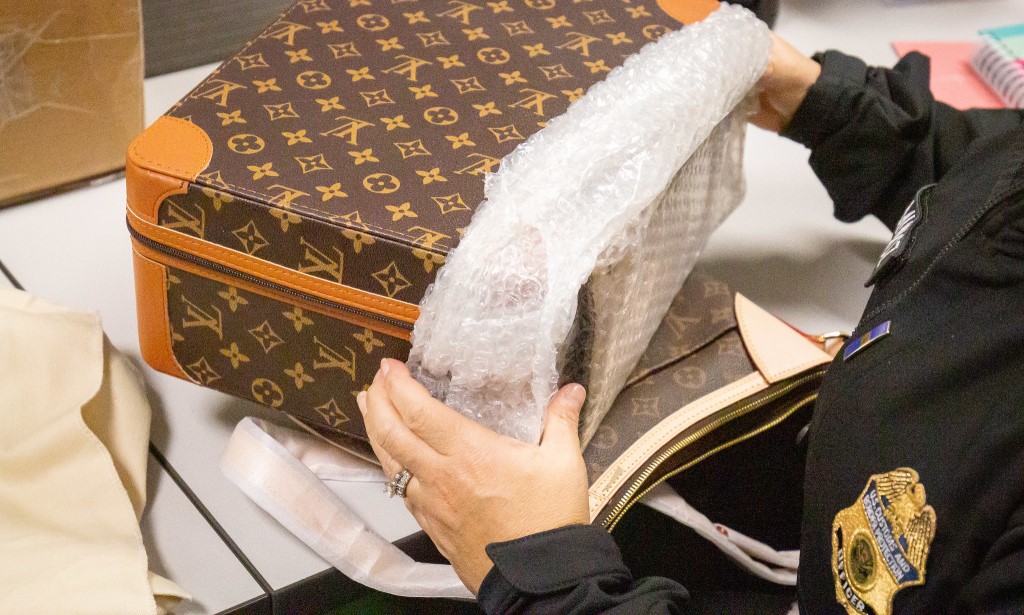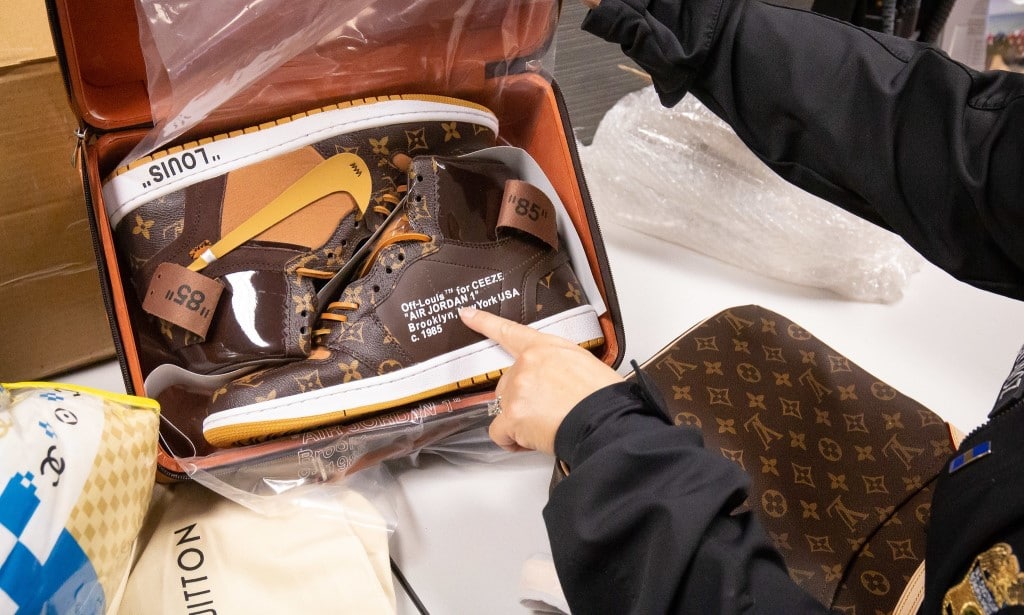LVMH’s Luxury Goods Blockchain: A Lost Cause

Louis Vuitton – Singapore ©Jeremy Hui
Global conglomerate LVMH launched a blockchain that will help track its luxury goods internationally, But how effective is using crypto to protect itself from pirates?
The blockchain will extend to protect more than 60 different brands owned by the conglomerate that also owns the iconic and extremely expensive Louis Vuitton line of bags and luxury leather goods. LVMH has enlisted the help of a full time blockchain team that has been developing the system in secret for over a year now; the team itself is working closely with ethereum design company ConsenSys and Microsoft Azure.
The project, codenamed AURA, was developed off a permission version of the ethereum blockchain called Quorom. This type of blockchain was initially developed for the purpose of data privacy by JPMorgan. LVMH stated that it wanted to remove the role of third party actors in the industry, and is planning to offer a white label form to other conglomerates who wish to use the technology as well.
This is aligned with what LVMH termed “an industry consortium” coming together for a common goal. The IP rights of AURA will be donated to a separate entity and the entity will be run by the competitors who may not want to work too closely with a conglomerate as huge or as influential as LVMH.

Les Journées Particulières LVMH ©Julien Chatelain
One can imagine the reaction of brands like Gucci if they had to approach LVMH to be able to use a white label version of the AURA blockchain. The blockchain is by no means a ‘cryptokitty’ version of the ethereum blockchain as the conglomerate opted for an enterprise-grade blockchain. The effort resulted in an ERC-721 non-fungible token (NFT) standard.
What this means is that individual tokens in the blockchain are considered immutable and will provide hallmarks to one-and-only (note: unique) items that will of course correspond to real-world goods sold under the 60+ brands owned by LVMH. The conglomerate is further quoted as to saying that they are thinking ahead in terms of public access and interoperability, and they wish to ‘give back to customers’ the ‘power.’
Blockchains vs. Piracy
Blockchains are powerful and openly accessible systems. They’re publicly audited and mined, and they grow as much as the users will allow the blockchains to grow. But will a blockchain stop pirates (especially those in China) from creating replicas of Louis Vuitton bags, and what not.
Probably not.
Chinese luxury good pirates have been operating for decades, and no matter how many times the Chinese government cracks down on the operators, they just rebuild in a different city, a different province, and go on their way. There is no huge effort to stem or combat brand piracy in the country. Just imagine the headache that other big brands have to face every day.
IPR Seizure 2019 – Office of Field Operations, Area Port of Jacksonville, Florida ©U.S. Customs and Border Patrol
Japanese electronics giant Sony has yet to figure out a way to stamp out pirates that use variations of its brand name. I have personally seen electronics knockoffs with the Sony typeface but with a different spelling: SOMY, SOME, SONMY, SONNY. The list goes on. The instant recognition afforded by the older brand sells these knock-offs. But do people actually think that they are buying the genuine article? Not at all. They buy because the knock-offs are cheap.
We no longer live in an era when people have to scrutinize their goods to get the real thing anyway. The fakes will always be fakes, and there would always be dead giveaways that they’re fakes. For one, Louis Vuitton bags can max out credit cards. The fakes are sold for $20-$100+ depending on the ‘class’ of fake it is. But everyone knows that the fakes are still five or six times cheaper.
So this move by LVMH is equivalent to hitting a dead horse with a stick. There’s no point, other than showcasing its clout and resources. People will find the blockchain useful for confirming if their purchases are genuine, but on the whole, it ignores the truth of why people buy knockoffs or fakes in the first place: they can’t afford luxury goods, but they want a piece of the cultural capital that comes with obtaining the brand.
But then again, we have to ask ourselves: will the conglomerate fold with the presence of pirates, or not?

LVMH @VivaTechnology ©Pierre Metivier
And the answer to that question is also no, it won’t, and here’s why. Royole Corporation, a known innovator in the field of smart devices and flexible displays, has recently teamed up with LVMH to create the “Canvas of the Future.” The Canvas of the Future can actually display custom images, videos, and the user can control the displays using a touch screen interface on the canvas, not unlike the screens of smartphones.
It took the Royole Corporation two years to produce the first iteration of the Canvas of the Future, and the way it turned out, the canvas is comprised of multiple digital displays. These displays provide a space for LV bag owners to customize the look of their bags. The possibilities are frankly endless, and this has never been done before.

Louis Vuitton Partnership with Royole – Canvas of the Future ©Louis Vuitton
LVMH may be struggling with the pirates, but it shows no signs of giving up on its initial drive to protect and reign over the international luxury brand ecosystem. Ironically, most counterfeits are made in China, where up to a staggering 50% of sales in Louis Vuitton bags and goods are coming from.



